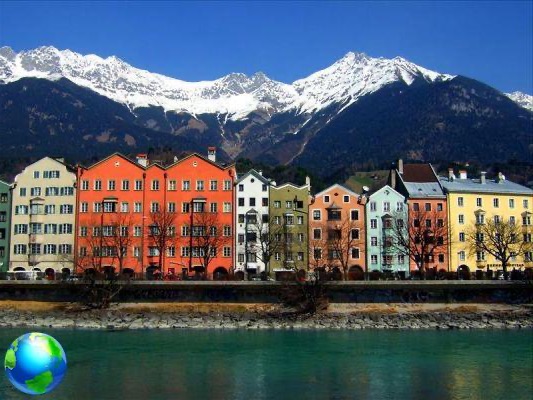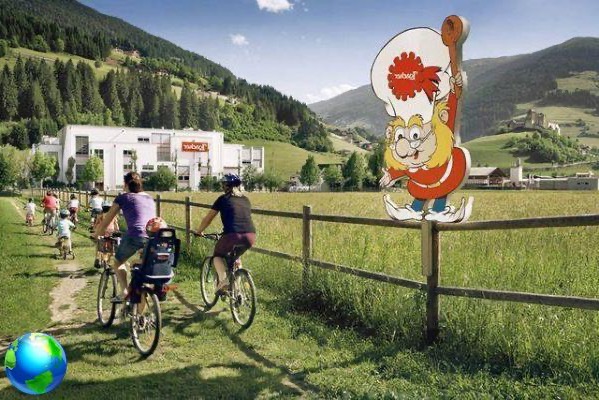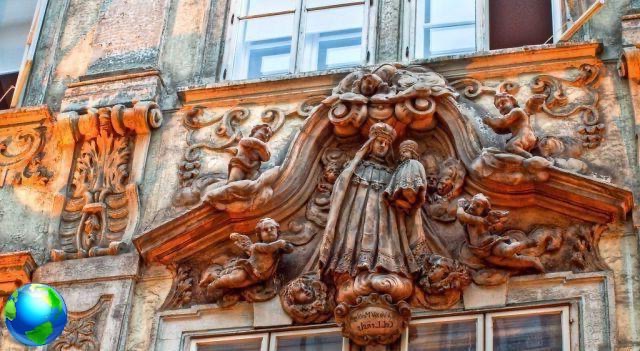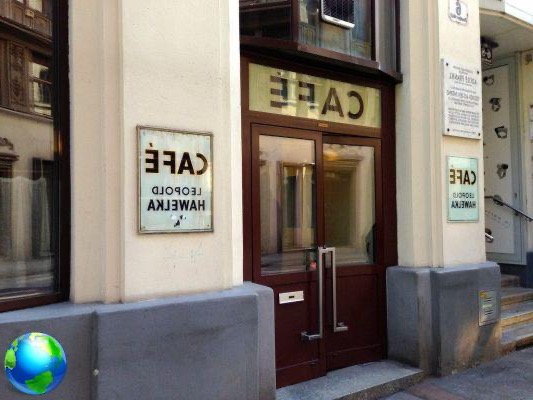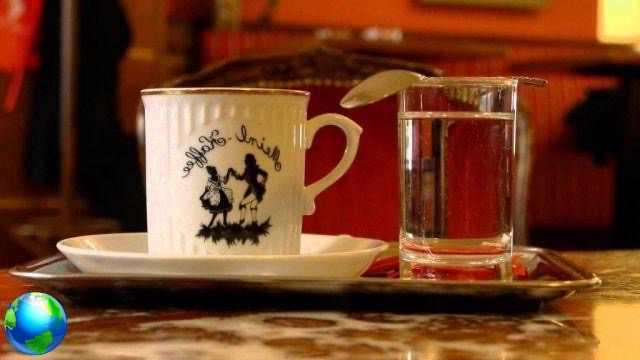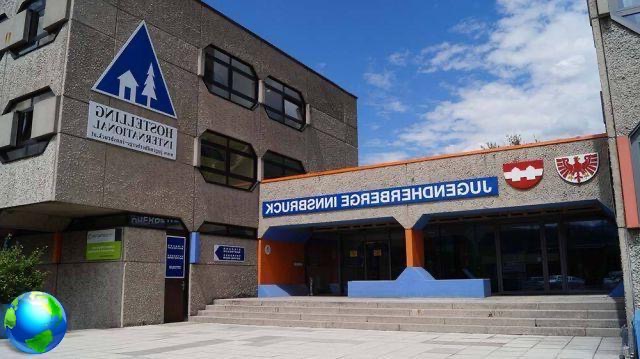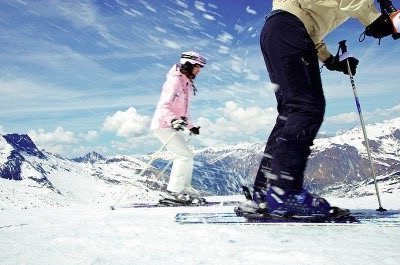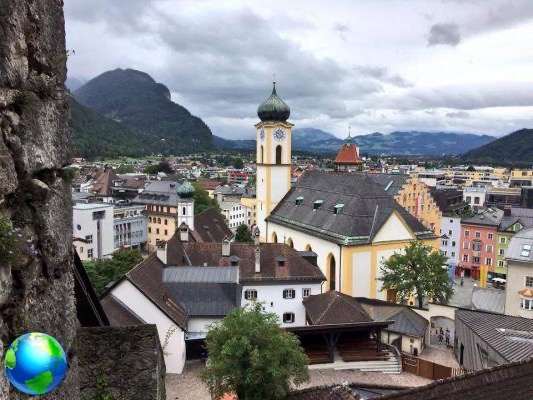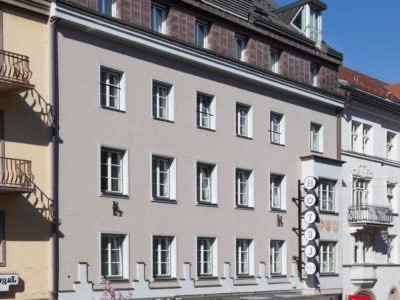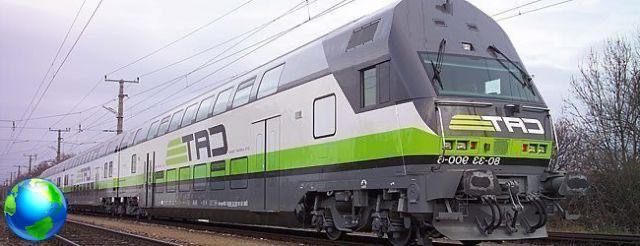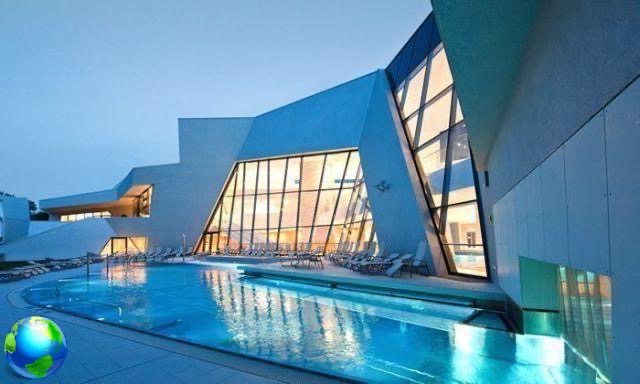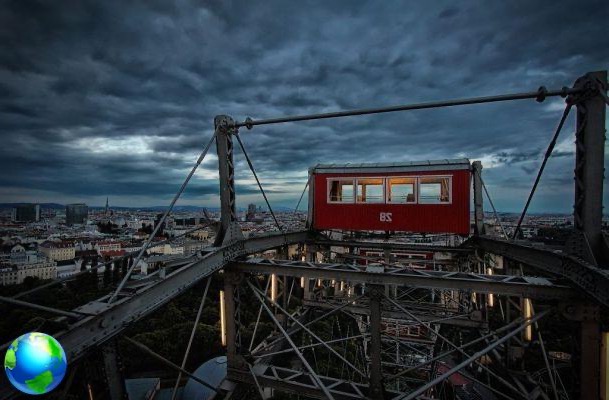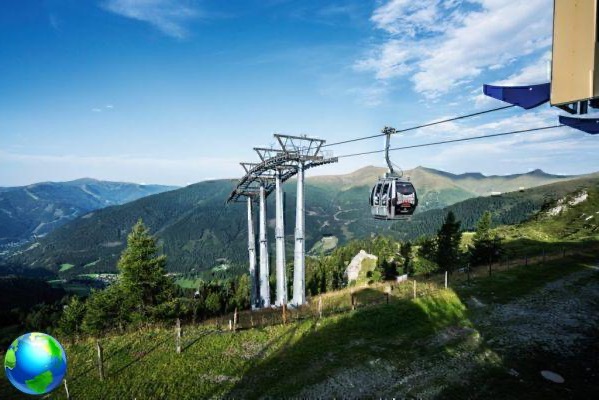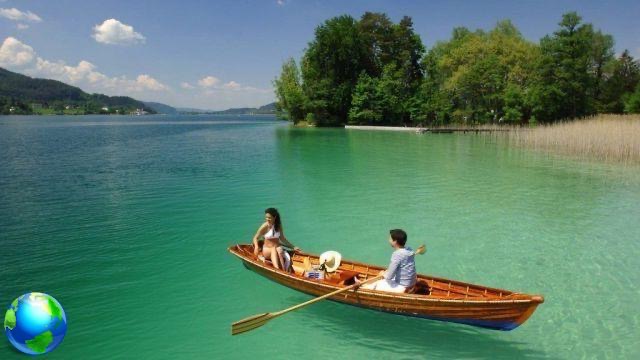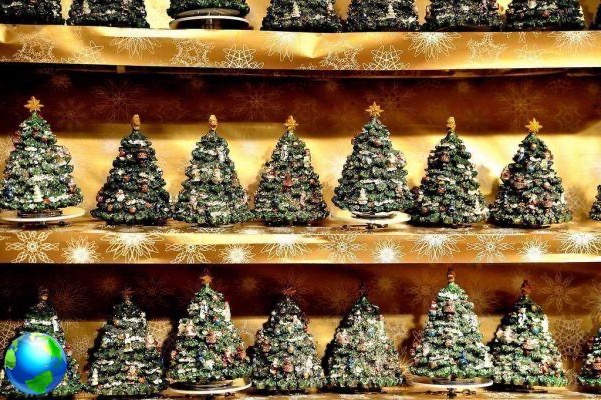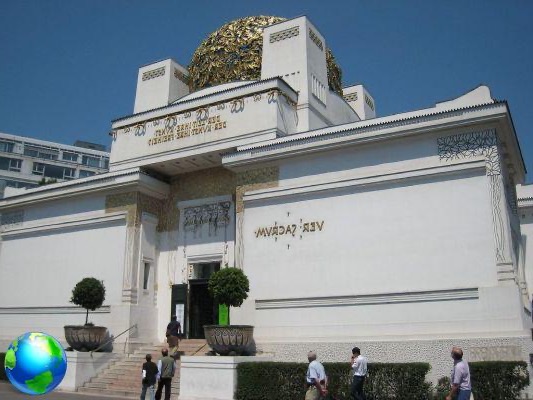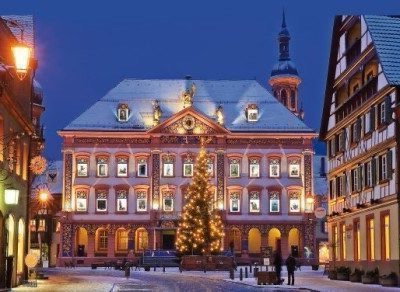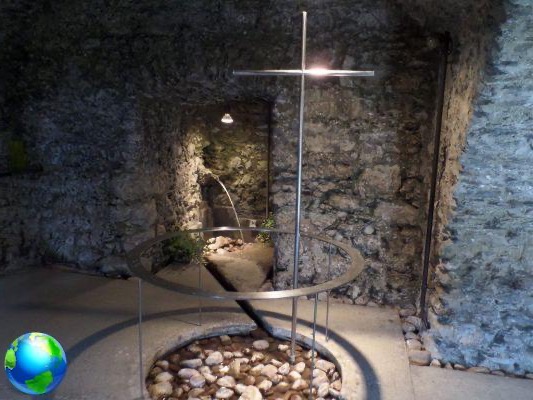Vienna, the imperial city by definition in Europe, the royal capital of the Habsburg Empire, with its magnificent palaces and its large avenues. But Vienna is much more than its glorious past, it is also a city projected to the future, with a vibrant artistic and cultural heritage and a very high quality of life. For me, and I say it really out of the blue, it is one of the most beautiful and interesting capitals in Europe (I put it in the top 5 along with Prague, Lisbon, Paris and Istanbul). It is a city that has an incredible amount of things to see and do, both in the city and its surroundings, and you never get bored. Personally I've been there 3 or 4 times already, but I'm sure I'll keep going back because time is never enough. In this article I will talk mainly about the "must see", of what to do and visit in Vienna in 3 days if you are going there for the first time. Three days are really the minimum wage to be able to appreciate the different souls of the city. If you don't want to waste precious time and start orienting yourself as soon as you arrive in the city, I recommend that you participate in this free tour of 2h and 30 ' (in English). Start from the Albertina and pass by the main attractions of the historic center (the Hofburg, the Cathedral of Sante Stefano, etc.). There is also an evening version, which lasts 2h (at this link you will find all the info on the free evening tour of Vienna). In both cases, remember to book first from the site.
How to get to the center of Vienna from the airport
THEVienna International Airport it is located about 20 km south of the city and the city center can be reached in several ways. Depending on where you have the hotel, you can take:
- Il City Airport Train (CAT): the fastest way, which connects the airport with Wien Mitte (Vienna Center) in just 16 minutes (12 euros one way or 21 round trip - leaves every 30 ')
- The S7 light rail line (S-Bahn): leaves every 30 minutes and arrives in Wien Mitte and Wien Praterstern in about 25-30 '. From there you can then change the S-Bahn line or take the underground (U-Bahn) to reach your hotel (4,20 euros or 1,8 euros if you have the Vienna City Card - see paragraph below)
- I Railjet trains of the Austrian Railways (ÖBB) which connect the airport to Vienna Central Station and Wien Meidling Station. These also leave every 30 'and it takes 15 minutes to reach the Central Station or 30' to the Wien Meidling station (4,20 euros or 1,8 euros if you have the Vienna City Card - see paragraph below).
- With the buses of Vienna Airport Lines you can directly reach the center of Vienna, the Donauzentrum via the exhibition center and the Vienna International Center (VIC) / Austria Center Vienna or the Westbahnhof railway station and the Vienna Central station. There are 3 different lines. Find all the info on this site (7 euro one way or 13 euro return - 1 euro discount with the Vienna City Card).
How to get around Vienna
Getting around Vienna is very easy !! The historic center, the one inside the Ringstrasse can be explored on foot. To move elsewhere, you can use one of the 5 lines of the metropolitan (U-Bahn), those of light rail (S-Bahn), the tram he bus. Here you will find the downloadable map. Alternatively, there are Uber (which is very cheap here) oi taxi. To see what is the best way to get to a destination I usually use Citymapper, which works all over the world and gives you all the possible and imaginable info (it's a free app!). The single ticket costs 2,4 euros.

Health insurance is recommended
Being in Europe, as Spanish citizens we have the right to health care, but there are specific conditions and ceilings. My advice is to still take a classic medical-luggage insurance that can cover you during the trip, even for Covid-19. I am very happy with many insurance companies, a site that compares the policies of different companies and proposes the most convenient policy for that particular trip. To do this you will have to enter the data relating to your trip and they will send you an email with the best proposal that you can then buy directly online (!!!). All travel insurances also cover medical assistance in the event of a coronavirus infection, including testing if necessary. There is also coverage for the extension of the stay in the hotel due to the quarantine. Likewise, the trip cancellation guarantee includes coverage for illness or death of the traveler or a family member due to COVID-19.
Vienna City Card
If you want to combine public transport with lots of discounts in museums and attractions in the city, you may want to buy it Vienna City Card from 24-48 or 72h. The card can be bought online or in the tourist offices on site and you only have to validate the pass at the first automatic ticket office. After validation, you will have 24, 48 or 72 hours to take advantage of the free and unlimited use of public transport such as the subway, local trains, day and night buses and use the discounts in numerous museums, exhibitions, theaters, concerts, shops, cafes, restaurants and taverns in Vienna. Find all the info on this site.

Where to sleep in Vienna
The Levante Rathaus Apartment : I slept in a very nice apartment in this building which is located in a quiet street a few steps from the Rathaus and I recommend it. They have apartments with or without kitchen, all very nice and super-equipped, the staff is very kind and there is coffee and tea available throughout the day. The apartments are very quiet and 15 'from the Cathedral of S.Stefano or from the Hofburg and, what's more, the quality / price ratio is excellent! On the same street then there is a very good Neapolitan pizzeria (it's called Via Toledo and the pizza is like in Spain) and a typical restaurant where I went twice as much as I liked (the Zur Bohmischen Kuchl).


What to see in Vienna: all the places not to be missed
1. Cathedral of Santo Stefano
Il St. Stephen's Cathedral is one of the symbols of Vienna, a Gothic masterpiece that is located in the square of the same name, right in the heart of the historic center. The thing that strikes us most when it is there in front of us is the beautiful glazed tile roof, colored. On the one hand it forms the coat of arms of the double-headed eagle of the Habsburg Empire and the coats of arms of the city of Vienna and Austria. The cathedral has 4 towers, with the highest being 136,44 meters; climbing a staircase of 343 steps you can reach its top and enjoy one unbounded view over the whole of Vienna. Inside there is a beautiful stone pulpit in Gothic style, the high altar in Baroque style, altars and side chapels of great value, the treasure of the cathedral and numerous tombs of important historical figures (such as Emperor Frederick III and Prince Eugene of Savoy). You can also have a nice view of the roof of the Duomo and its surroundings from the terrace of the Sky Cafe. Not far from the Duomo it is also worth entering the Greek Orthodox church which is located in Fleischmarkt at 13 (you will thank me ..).
2. Hofburg: the winter residence of the Habsburgs
Vienna is synonymous with Habsburg empire, Maria Theresa of Austria, Francesco Giuseppe and his wife Princess Sissi, and the Hofburg imperial palace it represents precisely the maximum expression of their wealth and their power. Rather than a palace, we should actually speak of a city within a city. The winter residence of the Habsburgs in fact consists of many buildings close to each other that have been enlarged and modernized since the 600th century; palaces in which the Habsburgs lived for 1279 years, from 1918 to XNUMX. One of the palaces now houses the offices of the President of the Republic, the others ... various museums, libraries, chapels and other monuments. What do I recommend to visit in the Hofburg? For sure the Sissi Museum and the Royal Apartments National Library and the church Austinerkirche. The royal apartments are the ones where Sissi lived with Francesco Giuseppe and the rooms are magnificent! With the same ticket you can also visit the Silverware Museum, with all the services used by the rulers (simply crazy! Admission 14 euros). But the highlight of the Hofburg for me is there National Library, one of the most beautiful historical libraries in the world. The Gala Hall in the baroque style of the library will leave you speechless, really (admission 7 euros). Right next door don't get lost then Austinerkirche, a neo-Gothic church in which it is located the tomb of Maria Teresa's daughter by Canova..a masterpiece. If you have more time you can also visit the Imperiale Treasure (Schatzkammer) and Imperial Crypt (Kaisergruft) where most of the members of the royal family rest.



3. Leopold Museum: the masterpieces of Modernism
There is a really embarrassing amount of important museums in Vienna, so you will be forced to choose according to your tastes and interests. The ones you find mentioned in this article therefore represent only my very personal selection. Several museums are located in the Museum quarter, one of the largest museum complexes in the world, with 60.000 square meters of exhibition spaces ranging from ancient to contemporary art. Among those housed inside, one absolutely not to be missed is definitely the Leopold Museum, which includes one of the largest collections of Austrian Modernism, with many paintings by Klimt, Schiele, Kokoschka, Moser and others (admission 12 euros).
4. Schloss Upper and lower Belvedere
Il Palazzo del Belvedere is considered one of the most beautiful Baroque palaces in the world and was built for Prince Eugene of Savoy around 1714. First there was the Lower Belvedere (the summer residence of the prince), then the upper one was also built, used for court parties and banquets. Between the two a beautiful French garden. On the death of the prince, the palace was bought by the Habsburgs and became another official residence. The Upper Belvedere today it houses a very rich art collection (which includes the famous Bacio in Klimt- in fact it is the largest collection in the world of the artist's paintings, there are 24). In the Lower Belvedere you can instead visit the private apartments and the prince's ceremony rooms, all in Baroque style of course.


5. The Ringstrasse (Rathaus, Palace of Justice, etc.)
La Ringstrasse (or simply Ring as it is called) is the large tree-lined avenue that surrounds the historic center of Vienna, following the path of the ancient walls. The one we see today is traced in the mid-800th century by Francesco Giuseppe, who had a whole series of sumptuous buildings built that today overlook it. Among these is the Rathaus (Municipality), the most sumptuous building in the Ring, immense in Gothic style, in front of which one of the largest Christmas markets in Vienna is set up in December. Other palaces to visit are also the Parliament, with its neoclassical facade and a large fountain of Athena and theUniversity, where you can enter freely even late in the evening (I told you, but I recommend the guided tour to see the internal rooms too). Finally the Palace of Justice (Justizpalast), with a beautiful atrium made of stairways, porches and glass roofs.
6. Secession Building
Vienna is famous, among other things, for having started a movement that has gone down in history under the name of Viennese Secession. The architects were 19 avant-garde artists, including Klimt, Hoffmann e Moser, who designed and built this modernist palace as an exhibition space to exhibit their and other works. Today the palace hosts contemporary art exhibitions (10-15 per year) and the permanent exhibition of the famous Klimt's Beethoven Frieze. Personally, unless you are a fan of Klimt and want to see all his works in Vienna, the Secession building it is more worth seeing from the outside than the inside..but consider yourself. If you love this artistic movement, however, I recommend that you participate in the Free tour of Modernist Vienna, a 2h tour to discover the most beautiful modernist buildings in the city.



7. Karlskirke (St. Charles Church)
Together with the Cathedral of Santo Stefano the Karlskirke for me it remains the most beautiful church in Vienna. This Baroque church was built between 1716 and 1739 and has two large columns on the facade which are inspired by the Trajan's Column in Rome. The dome reaches 72 meters and you can go up with an elevator to see the beautiful frescoes up close. When I was in Vienna for the last time (October 2020) inside there was also a large installation by Tomas Saraceno..megnifica !! In front of the church there is a pond with a sculpture by Henry Moore that allows you to take magnificent photos using the reflection on the water.
8. Naschmarkt and Otto Wagner's Art Nouveau buildings
Not far from Karlskirke starts the large Kettenbruckengasse, an avenue where the Naschmarkt ("Delicatessen market") or the most famous market in Vienna, which was born in the eighteenth as a farmer's market. Today this market is a mix between traditional market, with stalls of fruit, vegetables, meat, etc ... and stalls / small street food restaurants where you can find everything from typical sausages to ethnic street food. But I recommend you to come here especially to see the beautiful Art Nouveau buildings designed by Otto Wagner. You will spot them immediately because they are covered with tiles with floral motifs or decorated with valuable bas-reliefs. If you want to take a break, stop by Savoy Coffee or Sperl Coffee (two very beautiful historic cafes that are just a stone's throw away).



9. Hundertwasser House e Art House
With these unpronounceable names we refer to two very particular ones buildings designed by Friedensreich Hunderwasser, one of the most important Austrian architects / artists / ecologists of the XNUMXth century. Hunderwasser can be considered a forerunner of bio-architecture, and its buildings and surfaces are inspired by the soft irregularity of organic forms, no straight lines, no perfection. There Hunderwasser house is a social housing building managed by the municipality of Vienna and not open to visitors (the apartments are rented at a price of 5 euros per square meter). The municipality verifies the real need of the family and prefers those nuclei in which there is an individual who is particularly interested and active in the contemporary artistic world. You can instead visit the interiors of the Art house, another building also designed by him that houses the Hunderwasser Museum, where you can see his paintings, his graphic works and understand his theories in the architectural and naturalistic fields. The bar in the internal garden is also very nice.
10. Spittelau: the Fernwärme and Zaha Hadid's Faculty of Architecture
Moving north along the Danube Canal you will reach the Spittelau area, near the large university campus of Altes AKH, born from the transformation of an 700th century hospital. Like all university areas, this area is very lively both day and night and along the canal there are many bars and clubs, as well as a good number of works of street art. In this regard, the most beautiful are found under the School of Architecture designed by the archistar Zaha Hadid, which overlooks the canal itself. Immediately behind you cannot fail to notice another building designed by Hunterwasser: the District heating, a magnificent colorful building that hides a waste incinerator inside.



11. Schönbrunn Palace: the summer residence of the Habsburgs
Let us now return to the Habsburg dynasty to visit their summer residence, the magnificent Schönbrunn Palace, located south of the city. Initially designed to be Ferdinand II's hunting lodge, it was enlarged by Leopold I and chosen by Maria Theresa as the residence of his family and the imperial court. The castle and its immense gardens are second only to the palace of Versailles in terms of display of power and wealth. The interior of the building includes 1441 rooms, all furnished in Rococo style and what you can visit today are the sumptuous imperial apartments. There are 40 open rooms: you can visit them all (and I recommend it) if you buy the Grand Tour ticket (22 euros) or only 26 if you buy the ticket Imperial Tour (18 euros). The most beautiful rooms can only be visited with the Grand Tour. The magnificent French gardens are free; you will have to pay a ticket just to go up to the panoramic terrace of the Gloriette, a monument from which you can see the whole park up to the palace. If you have time, stop for a drink in the beautiful café located inside the Gloriette. For an even more immersive experience you can attend a classical music concert inside the castle; here you will find all the info to book.
12. Museum of Art History (Kunsthistorisches Museum)
Among the things to see in Vienna there is certainly also the Museum of Art History (especially if you are a lover of XNUMXth and XNUMXth century painting). The Kunsthistorisches Museum is one of the oldest and richest museums in the world and was officially inaugurated on October 17, 1891 in the presence of Emperor Franz Joseph I of Habsburg. The emperor commissioned it to contain the immense collection of Habsburg art and make their heritage accessible to all. The most important part of the museum is undoubtedly the Painting Gallery, exhibiting works by Correggio, Mantegna, Tintoretto, Veronese, Canova, Michelangelo and many others. In addition to the paintings there is also an Egyptian-Oriental collection, one of Roman and Greek antiquities, that of sculpture and decorative arts and the numismatic cabinet.



13. Historic cafes (Sacher, Central, etc.)
One of the experiences not to be missed in the Austrian capital is to sit in one of the many and legendary cafes in the city. Austrians love to sit at the bar, have a coffee and calmly read the newspaper, perhaps even eating a dessert or some other delicacy. Some historic cafes are very opulent and elegant (like the Central Coffee, Demel Coffee or Savoy Coffee for example), while others are more sober, such as the Sperl Coffee and Café Korb (Freud's favorite). The Cafe of the Hotel Sacher, a real institution in Vienna, Here people come to eat the real and authentic Sachertorte (my favorite cake ever!) and appreciate its luxurious decor. Sitting on those red velvet sofas we all feel a little noble… let's tell the truth!
14. Case Museum (Mozart, Freud, Strauss ..)
In its golden years Vienna was inhabited by an unknown number of musicians, artists, scientists who then had an impact all over the world in the following centuries. Let's talk about Mozart, Beethoven, Freud, Strauss, Klimt, Schubert and many others. Some of the houses where these historical figures spent a few or many years have now become museum houses and can be visited. Among the most significant are certainly the Mozart's house, which is located near the Cathedral of S. Stefano, where the musician spent 2 and a half years and the Freud's house. In the latter the great psychoanalyst spent almost 40 years, until 1938 when he was forced to leave Vienna following the racial laws. Today it houses a museum with various memorabilia that testify to his work and passions. Other interesting houses are there Klimt's villa, which he used as an atelier until his death, the Beethoven's house, Schubert's and Strauss's.
15.Prater
I close my selection on the places not to be missed in Vienna with the Prater, name that indicates both the amusement park with the very famous Ferris wheelwhat a great park. The latter extends for 60 square kilometers and was opened to the public in 1766, after having been the hunting reserve of Joseph II. A beautiful green oasis a stone's throw from the center of Vienna, also close to theisland on the Danube where the Viennese come to the beach in summer, to do water sports or to walk.
If you have more time, I recommend that you also visit:
- Am Steinhof Church (designed by Otto Wagner)
- Museo at Ernst Fuchs (inside Otto Wagner's villa)
- Cimitero Monumentale



What to see around Vienna
Grinzing
Grinzing is a district of the city located in the north west rather than surroundings of Vienna. AND the old wine district of Vienna and represents the perfect starting point for a trip through the vineyards. The neighborhood is then littered with Heurigen traditional, the places where, according to tradition, the new wine of the season is drunk. Here you can really breathe the air of the past!
Bratislava
The capital of Slovakia is located a stone's throw from Vienna (only 80 km separate them) and can represent a beautiful day trip from the Austrian capital. During the summer, a nice way to visit it is to participate in an excursion to Bratislava with return along the river, on the Danube. Here you will find all the info.

- The Via Francigena del Sud: on the way from Rome to Puglia
- New Year's Eve in European capitals: where to go?
- December in the heat: 12 dream holidays for Christmas and New Year
- What to see in Athens: all the places not to be missed
- Budapest: what to see in 3 days




